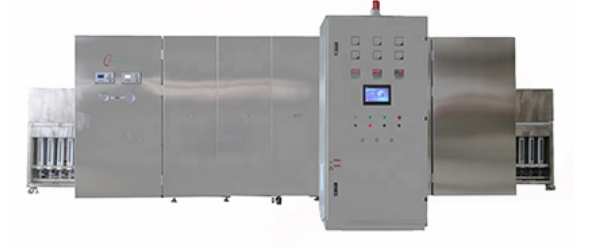Introduction
Carbon paper, carbon cloth, and carbon fiber are critical materials in modern industries such as fuel cells(GDL), aerospace, and high-performance composites. To achieve optimal mechanical strength, electrical conductivity, and thermal stability, these materials must undergo precise continuous carbonization and ultra-high-temperature graphitization. Cxinduction™, a global leader in high-temperature equipment, provides continuous carbonization furnaces and ultra-high-temperature graphitization furnaces that ensure superior product consistency and efficiency. Our systems are the preferred choice for manufacturers.

Key Heat Treatment Processes
Purpose: Converts polymer-based precursors (e.g., PAN-based carbon fiber, phenolic resin-impregnated carbon paper/cloth) into carbon-rich structures by removing non-carbon elements (H, O, N).
Equipment: Cxinduction™ Continuous Carbonization Furnace
Temperature Range: 500–1600℃ (precise control within ±3℃).
Atmosphere: Nitrogen or argon to prevent oxidation.
Continuous Feeding: Enables high-throughput production without batch interruptions.
Challenges & Solutions:
Preventing fiber damage: Controlled tension systems ensure smooth material movement.
Uniform heating: Multi-zone temperature control eliminates hot/cold spots.
Purpose: Enhances crystallinity, improving electrical/thermal conductivity (up to 1000 W/m·K) and mechanical strength.
Equipment: Cxinduction™ Ultra-High-Temperature Graphitization Furnace
Temperature Range: 2500–2700℃ (uniformity ±10℃).
Heating Elements: High-purity graphite or CFC (carbon fiber composite) for durability.
Atmosphere: Vacuum or inert gas (Ar) to avoid contamination.
Critical Considerations:
Heating rate control: Prevents thermal stress-induced cracks.
Cooling optimization: Gradual cooling avoids structural defects.


Why Choose Cxinduction’s Equipment?
±3℃ precision in carbonization, ±10℃ in graphitization – Ensures batch-to-batch consistency.
Automated tension control – Prevents fiber breakage during continuous processing.
Advanced insulation reduces energy consumption by 25–30%.
Modular design minimizes downtime for maintenance.
PLC monitoring: Real-time data tracking for quality assurance.
Remote diagnostics: Quick troubleshooting for uninterrupted operation.
Installations globally – Trusted by top carbon material producers.
24/7 technical support – Maximizes production uptime.
Heat Treatment Process Considerations
Carbon paper/cloth: Ensure resin is fully cured before carbonization.
Carbon fiber: Precise PAN fiber stabilization is critical.
Carbonization: N₂ flow rate must balance impurity removal and fiber protection.
Graphitization: Argon purity >99.999% to prevent carbide formation.
Hot spots can cause uneven graphitization → Cxinduction’s multi-zone heating solves this.
Avoid moisture absorption by storing in dry environments.
Applications of Heat-Treated Materials
Carbon paper: Gas diffusion layers (GDLs) for PEM fuel cells.
Carbon cloth: Electrode substrates for electrolyzers.
Carbon fiber: Reinforced composites for aircraft/rocket components.
Graphitized carbon cloth: Thermal protection systems.
Brake pads, seals, and high-temperature filters.
EMI shielding, flexible heaters, and battery current collectors.
Success Stories
Cxinduction’s furnaces are used by:
Leading fuel cell manufacturers for GDL production.
Aerospace material suppliers for next-gen carbon fiber.
EV battery companies for graphite-enhanced components.
Key Achievements:
✔ 20% higher tensile strength vs. conventional batch processing.
✔ Near-zero defect rates in continuous production.
✔ 30% energy savings with smart heating algorithms.
Conclusion
The performance of carbon paper, carbon cloth, and carbon fiber hinges on precision continuous carbonization and graphitization. Cxinduction’s advanced furnaces deliver unrivaled temperature control, energy efficiency, and automation, making them the top choice for mass production.